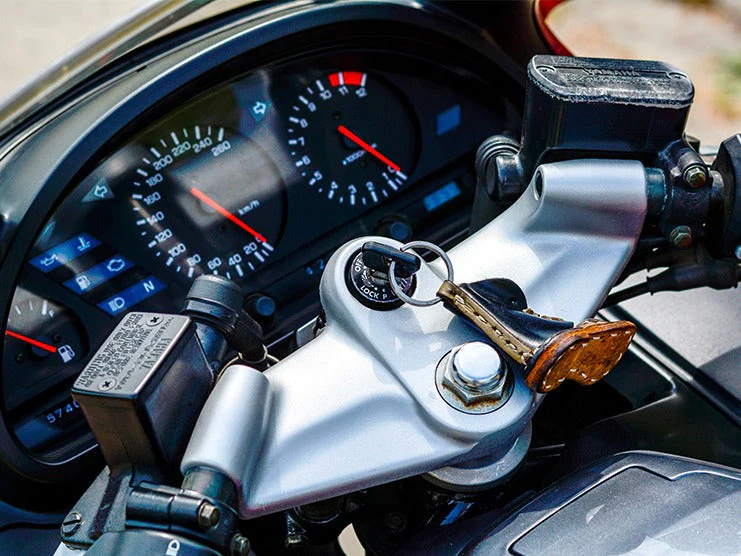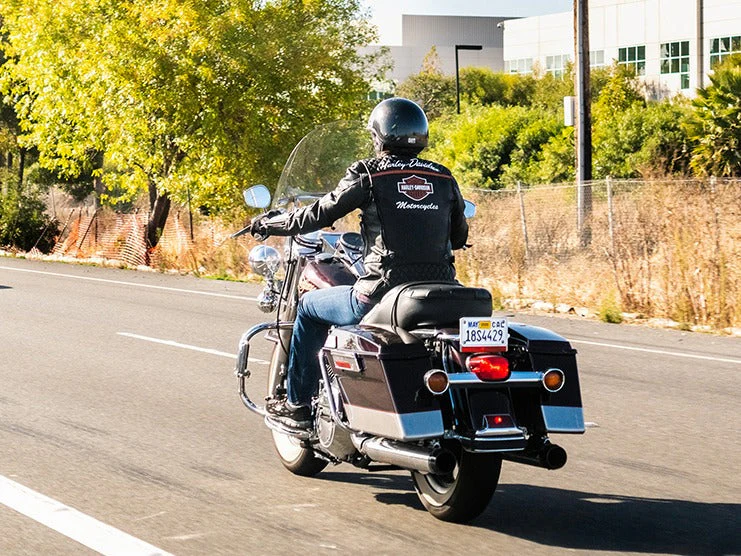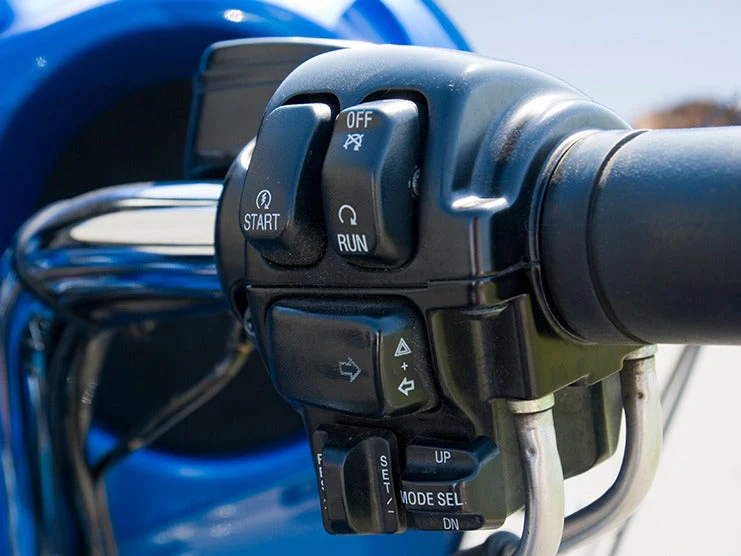Table of Content
A motorcycle fuel gauge is an instrument that tells riders the current amount of fuel in the tank. In an analog fuel display meter, the needle will point at “E” when the fuel tank is empty and “F” when it is full. Though it is a simple device, it can save you a lot of trouble if the fuel level indicator is accurate. Read this article to learn how a motorcycle fuel gauge works.
1. Types of Motorcycle Fuel Gauges
There are mainly two types of motorcycle fuel gauges, including:
- Floating fuel gauge
- Hydrostatic pressure fuel gauge
The floating fuel gauge is more common and installed on most motorcycles. It includes mechanical and electrical parts. Meanwhile, the hydrostatic pressure fuel gauge does not have mechanical parts, including the floating assembly. It uses a sensor to measure the hydrostatic pressure of the fuel and converts it into an output signal using a microcomputer.
Also Read: 6 FUEL SAVING TIPS FOR YOUR MOTORCYCLE!!!
2. How Does a Motorcycle Fuel Gauge Work?
2.1 Floating Fuel Gauge
Floating Fuel Gauge Assembly
The floating fuel gauge assembly consists of the following parts:
- Float
- Float arm
- Resistance wire coil
- Sliding contact
- Fixing platform
- Output point
- Display unit (Analog/Digital)
How a Floating Fuel Gauge Works
The float attached to the floating arm rests free inside the fuel tank. It is made of lightweight plastic and floats on the surface of the fuel inside the fuel tank. When the fuel tank is empty, the float arm opens up, and the float goes down. As soon as you refuel the fuel tank, the float starts rising with the fuel level, causing the float arm to contract.
The sliding contact attached to the float arm slides over the resistance wire coil, following the movement of the float. The movement of the sliding contact over the resistance coil helps change the resistance value. When the fuel tank is empty, the float is set free at its lowest position and the sliding contact is touching the closest end of the resistance wire coil, providing minimum resistance. When you refuel the motorcycle, the float starts floating on the surface and rises with the fuel. As the float goes up, the sliding contact also rises on the resistance coil, providing higher resistance.
The fixing unit helps to mount the floating unit inside the fuel tank. The variation in resistance values is sent to the control unit which interprets and translates it into the indicated fuel level. There are different analog and digital fuel meters used to display the fuel level.
| The Amount of Fuel in the Fuel Tank and the Resistance Value | |
|---|---|
| Fuel in the Fuel Tank | Resistance Value |
| Empty Tank | Low Resistance |
| Fully Fueled tank | High Resistance |
2.2 Hydrostatic Pressure Fuel Gauge
Hydrostatic Pressure Fuel Gauge Assembly
The hydrostatic pressure fuel gauge assembly includes the following parts:
- Fuel gauge sensor
- Micro-computer
- Display panel
How a Hydrostatic Pressure Fuel Gauge Works

The hydrostatic pressure fuel gauge is a float-free fuel gauge that measures the fuel level based on the fuel’s hydrostatic pressure. It is a simple unit that can be easily connected without making any modifications to the fuel tank.
The fuel gauge sensor is under the fuel tank and has two ports: an inlet and an outlet.
The inlet port is connected to the fuel tank hose. The fuel gauge unit includes a sensor to measure the fuel’s hydrostatic pressure and a microcomputer to evaluate the data. The hydrostatic pressure is sent to the microcomputer, which processes the data and sends it to the output unit to display the fuel level.

The Fuel Gauge Pro (Hydrostatic Pressure Fuel Gauge) is a simple aftermarket that can accurately measure the fuel level without a floating unit. It is also compatible with most aftermarket analog and digital fuel gauge display units.
3. Frequently Asked Questions (FAQs)
3.1 Why Do You Need to Replace a Motorcycle Fuel Gauge?
The motorcycle fuel gauge must be replaced every once in a while since the wire coil can become loose over time and provides an incorrect resistance value, resulting in the wrong fuel level being shown. The sliding contact can also become loose over time and may not touch the resistive coil. If your motorcycle fuel gauge does not provide the correct fuel level, it could be due to a worn-out resistance coil and sliding contact.
3.2 How Accurate are Motorcycle Fuel Gauges?
Motorcycle fuel gauges can become faulty and provide inaccurate fuel readings. The reasons why they are inaccurate can be due to the following:
Small Fuel Tank Sizes
Motorcycles have smaller fuel tanks than cars. A small amount of fuel consumed or added can cause a significant change in the fuel gauge display, resulting in a fluctuating fuel gauge needle.
Unusual Fuel Tank Designs and Shapes
Motorcycles are usually fitted with fuel tanks with unusual designs and shapes which makes it difficult for the fuel gauge to measure the current amount of fuel in the fuel tank. It is easier to find out or predict the volume of a liquid/fluid in a rectangular or square box/tank than in an unusual-shaped or curvy tank.
Also Read: HOW ACCURATE ARE MOTORCYCLE FUEL GAUGES
4. Final Words
Motorcycle fuel gauges have a simple design and mechanism. Most motorcycles are fitted with a floating fuel gauge, with a floating assembly attached inside the fuel tank to measure the fuel level. Meanwhile, most modern motorcycles come with float-free, hydrostatic-pressure fuel gauges. It accurately displays the fuel level by measuring the fuel’s hydrostatic pressure. The microcomputer installed with the sensor determines the fuel level by taking the hydrostatic pressure reading and sending it to the display unit.
An accurate motorcycle fuel gauge can help you be less worried when on the road since you will know the current amount of fuel in the fuel tank and know when to refuel. If you do not want to end up stranded due to running out of fuel, install a good-quality motorcycle fuel gauge for accurate readings of the fuel level.
There are several motorcycle attachments and modifications to make your ride more comfortable and fun, including handlebars, sissy bars, backrests, fairings, crash bars, and seats. You can also improve the storage capacity of your motorcycle by choosing from the different luggage options available at Viking Bags, including saddlebags, handlebar bags, tank bags, and sissy bar bags.













Leave a comment
All comments are moderated before being published.
This site is protected by hCaptcha and the hCaptcha Privacy Policy and Terms of Service apply.